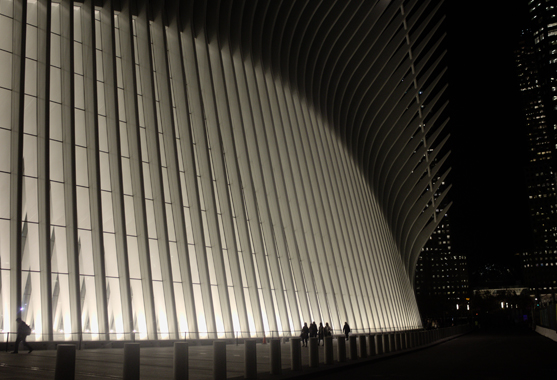World Trade Center Port Authority Trans-Hudson Transportation Hub – New York, NY
Client

- Port Authority of New York and New Jersey
Contract Value

$3 billion
Market

Transportation
Services

Design And Urban Planning, Program/Construction Management (PM/CM)
Reestablishing a Critical Link

On September 11, 2001, terrorist attacks destroyed the twin towers of the World Trade Center (WTC) and heavily damaged the WTC’s Port Authority Trans-Hudson (PATH) station. Because the station was in dire need of repair, service to Lower Manhattan was suspended until November 23, 2003, when a temporary station opened, reestablishing the critical link between Lower Manhattan and Jersey City.
In 2003, the Port Authority of New York and New Jersey selected the Downtown Design Partnership (DDP), in association with renowned Spanish architect Santiago Calatrava, to design a $3 billion permanent WTC transportation hub, also known as the PATH Terminal. This partnership was led by the joint venture of DMJM + Harris and STV Group, Inc. Parsons was an equal partner in the DMJM/STV joint venture and a prominent member of the DDP, which undertook this unique terminal design. The Parsons team played a key role in the transportation hub design and was responsible for the following tasks:
- Oversaw the infrastructure group design (civil, structural, geotechnical, underpinning, survey, and environmental) during the preliminary design.
- Directly managed 9 of the 19 final design packages, including all the early fast-track designs (New York City Transit 1 Line Subway underpinning system, east–west connector, underground ventilation structure, and Route 9 underpass tunnel structure).
- Served as the customer’s “specialty consultant” to review security/blast-protective designs, including countermeasures that cover chemical, biological, and radiological threats.
- Oversaw the project’s overall safety program.
- Provided all communication and systems designs.
- Provided the mechanical design for the transportation hub’s state-of-the-art skylight providing constructability oversight/risk management and estimating support.
Soaring Design
Mr. Calatrava envisioned the terminal as a dove rising from the ashes of the devastated WTC site. The transportation hub was designed to resemble a bird in flight as it is released from a child’s hand, with its wings made up of the two 150-foot-tall canopies and its body represented by the hub’s steel-ribbed arches.
Rising from the Ashes
The 650,000-ft² WTC transportation hub is fully climate controlled, and its featured “openness” provides passengers with a sense of security, as well as a clear visual orientation to both the interior and exterior building functions. The hub’s facilities incorporates sustainable design, including natural light (where possible), conformance to the Americans with Disabilities Act, and state-of-the-art security strategies and blast-resistance measures.
Learn More
For more than 75 years, our experts have designed and delivered the critical infrastructure that connects and protects communities around the world. Learn more about how we’re connecting and protecting global infrastructure.
